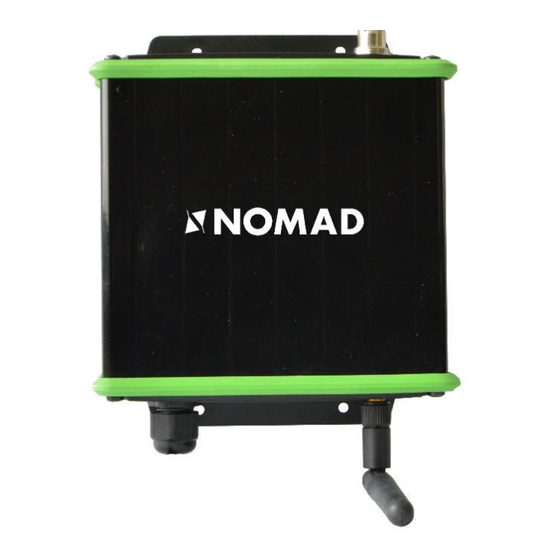Table of Contents
Advertisement
Quick Links
Advertisement
Table of Contents

Summary of Contents for DIGITAL YACHT NOMAD
- Page 1 NOMAD CLASS B AIS TRANSPONDER www.digitalyachtamerica.com...
- Page 2 Congratulations on the purchase of your NOMAD Class B AIS Transponder. This product is designed to be portable, with quick and simple installation that can be carried out by any practical person. With its wireless interface, NOMAD will work with any of the AIS apps on the market today, that support wireless NMEA data via UDP or TCP.
- Page 3 • The AIS antenna supplied with the NOMAD comes with 4m of cable and a BNC type connector. It is possible to use NOMAD with another model of AIS/VHF antenna or even connect it to a Class B Splitter for more permanent installation.
- Page 4 Plug the NOMAD USB cable in to the computer or power pack • Verify that on the top end cap of the NOMAD, that the green LED illuminates for a short period and then all four LED indicators flash once, followed by illumination of the amber and red LED’s.
- Page 5 NOMAD has been allocated by Windows or OSX. Click the ‘Connect’ button The computer will now query the NOMAD and display any “Static” boat data stored in the unit. All new units will have no data stored and so you will just have a series of blank boxes in which you will need to enter your boat’s data (see below).
- Page 6 “GPS Status” tab in proAIS2 along with a number of green bars in the signal strength graph. 3. If the unit does not have GPS fix within a few minutes check that the NOMAD’s internal GPS antenna is pointing upwards and only has fibreglass above it. Use the proAIS2 GNSS status page to check the signal strengths.
-
Page 7: Troubleshooting
4. Is there a good USB power connection? Is the computer or USB power pack providing enough power to the NOMAD. If you run ProAIS2 and go to the Diagnostics page, you should be able to see a supply voltage of approximately 12v. If this is lower than 10v then the USB port is not providing enough voltage/current and you should try another USB port or power pack.







Need help?
Do you have a question about the NOMAD and is the answer not in the manual?
Questions and answers